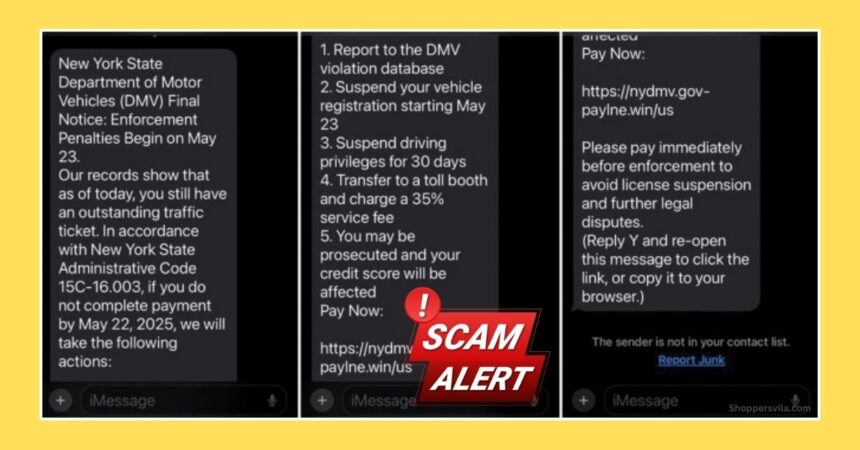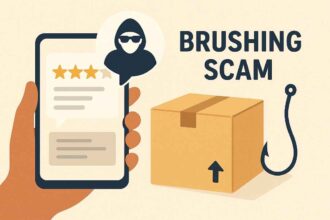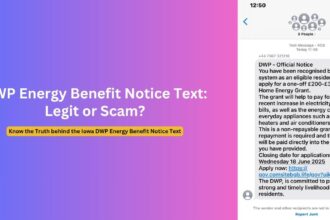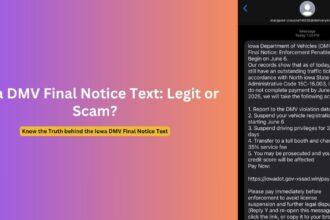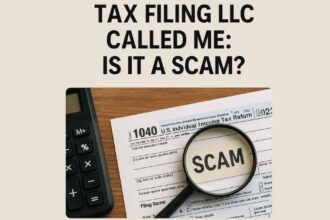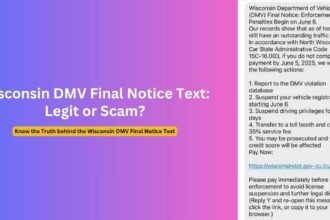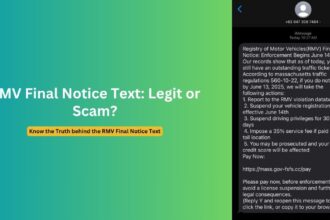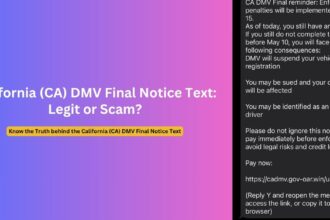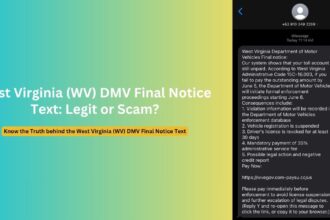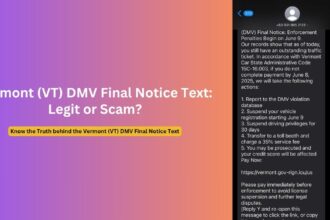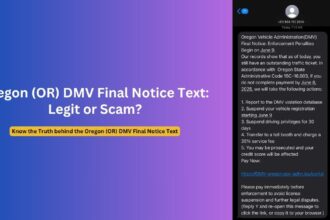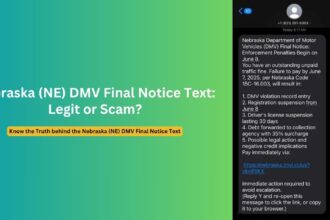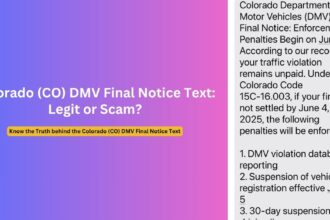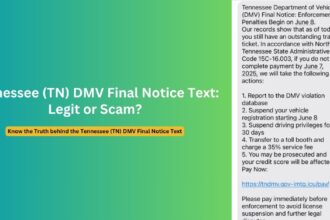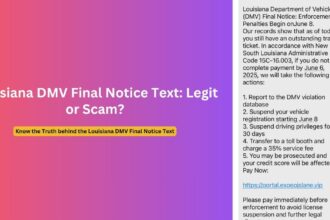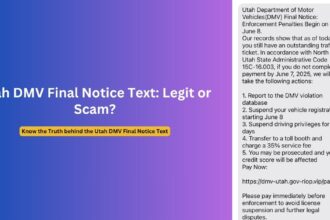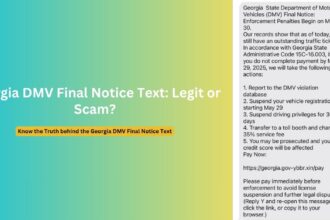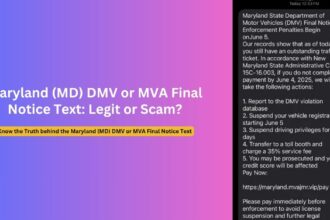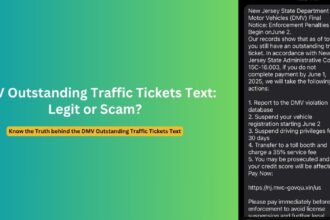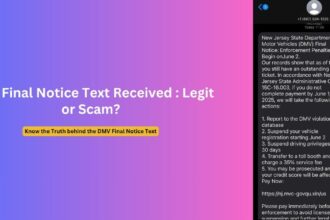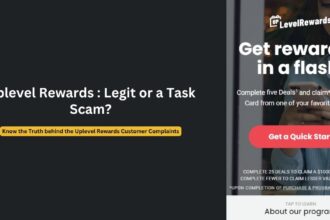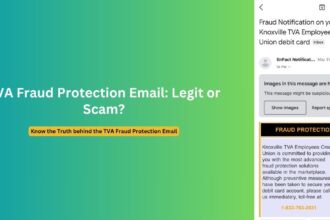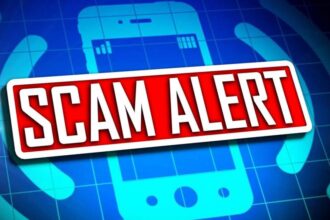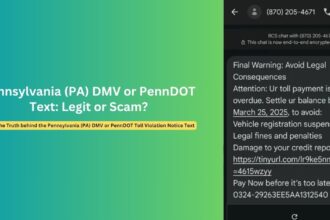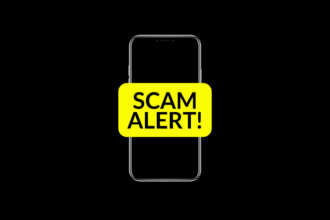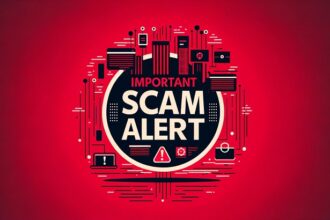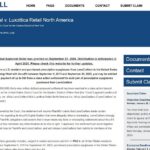New York residents are being targeted by an escalating wave of sophisticated text message scams impersonating the New York State Department of Motor Vehicles (NYS DMV). These fraudulent messages have evolved dramatically since March 2025, progressing from simple toll payment demands to complex “final notices” that reference fake legal codes and threaten immediate license suspension.
“These scammers flood phones with these texts, hoping to trick unsuspecting New Yorkers into handing over their personal information,” warned DMV Commissioner Mark J.F. Schroeder. “DMV will not send you texts asking for your personal information.”
The New York State DMV has been actively documenting these scams on their official website, revealing a disturbing pattern of criminal sophistication that poses serious risks to residents’ financial security and personal information. This comprehensive guide will help you understand, identify, and protect yourself from these increasingly deceptive fraud attempts.
Overview of the NYS DMV Final Notice Text Scam
The New York State DMV text scam represents part of a nationwide phishing campaign that has been systematically targeting multiple states since early 2025. What makes the New York version particularly dangerous is the scammers’ sophisticated understanding of the state’s actual DMV processes and E-ZPass toll system, allowing them to create highly convincing fraudulent messages.
According to official documentation from the NY DMV, these scams have shown a clear evolution in complexity and persuasiveness. The campaign began with simple E-ZPass payment demands in March 2025 and has progressed to elaborate “final notices” that include fake legal references and detailed penalty structures designed to create panic and urgency.
The scammers exploit New Yorkers’ familiarity with legitimate toll roads and traffic enforcement systems. Unlike states such as Tennessee (which has no toll roads), New York residents regularly receive legitimate communications about tolls, traffic violations, and license renewals, making fraudulent messages more believable and harder to identify immediately.
The New York State Office of Information Technology Services has identified this as part of a broader “smishing” (SMS phishing) campaign that targets residents’ trust in government institutions. These attacks are designed to steal personal information, financial data, and in some cases, install malware on victims’ devices.
Recent data suggests these scams are becoming increasingly effective, with criminals refining their tactics based on victim responses and seasonal patterns. The concentration of activity during spring 2025 coincides with tax season and preparation for summer travel, when residents are more likely to expect government correspondence and toll-related communications.
How the NYSDMV Final Notice Scam Works
The scam operates through a carefully orchestrated process designed to exploit human psychology and create false urgency:
Phase 1: Target Selection and Initial Contact
Scammers obtain phone numbers through various means, including data breaches, social media scraping, and purchased contact lists. They send mass text messages to New York area codes, knowing that statistical probability will deliver their messages to actual DMV license holders.
Phase 2: Creating False Urgency
The fraudulent messages always include tight deadlines—typically 24 to 48 hours—claiming that immediate action is required to avoid severe penalties. This artificial urgency prevents victims from taking time to verify the legitimacy of the communication.
Phase 3: Impersonation and Authority
Messages are crafted to appear official, often including:
- New York State DMV branding and terminology
- References to specific administrative codes (though these are fabricated)
- Official-sounding language about enforcement procedures
- Detailed penalty structures that mirror legitimate government communications
Phase 4: Information Harvesting
When victims click the provided links, they’re directed to sophisticated fake websites that closely mimic official NY DMV portals. These sites request:
- Full name and address
- Driver’s license number
- Credit card information for “fine payments”
- Sometimes Social Security numbers for “identity verification”
Phase 5: Exploitation
Once criminals have this information, they can:
- Make fraudulent purchases using stolen credit card data
- Commit identity theft using personal information
- Sell the data to other criminals on the dark web
- Use the information to access victims’ legitimate government accounts
The sophistication of this process has increased dramatically. Early versions were crude and easily identifiable, but recent iterations include convincing legal language, specific penalty amounts, and even fake case numbers that add an air of authenticity.
Fake Text Patterns: Documented Examples from NY DMV
The New York DMV has officially documented several scam text patterns on their website, showing clear evolution in criminal tactics:
Early March 2025: Basic E-ZPass Scams
Example 1 (March 27, 2025):
EZPass Group Final Notification: Your toll balance is overdue.
Please pay by March 27, 2025 to avoid legal action and additional fees. Thank you for your understanding!
https://ezpassiag.net-cygyz.com/ser
Pay now to prevent further penalties and enforcement measures.
This early version used simple language and obvious red flags like the suspicious “.com” domain with random characters.
Mid-March Development: Enhanced Official Appearance
Example 2 (March 28, 2025):
Department of Motor Vehicles (DMV) Notification
Your toll payment for E-ZPass Lane must be settled by April 16, 2025. To avoid fines and the suspension of your driving privileges, kindly pay by the due date.
Pay here: https://e-zpass.com-etcwgd.vip/us
(Please reply with “Y,” then exit the text message. Open it again,
click the link, or copy it into your Safari browser and open it.)
Latest Evolution: Sophisticated Legal Language
Example 3 (May 22, 2025):
New York State Department of Motor Vehicles (DMV) Final Notice:
Enforcement Penalties Begin on May 23.
Our records show that as of today, you still have an outstanding
traffic ticket. In accordance with New York State Administrative
Code 15C-16.003, if you do not complete payment by May 22, 2025,
we will take the following actions:
1. Report to the DMV violation database
2. Suspend your vehicle registration starting May 23
3. Suspend driving privileges for 30 days
4. Transfer to a toll booth and charge a 35% service fee
5. You may be prosecuted and your credit score will be affected
Pay Now: https://nydmv.gov-paylne.win/us
Please pay immediately before enforcement to avoid license
suspension and further legal disputes.
(Reply Y and re-open this message to click the link, or copy
it to your browser.)
This latest version represents a significant escalation in sophistication, including fake legal references and detailed penalty structures.
Red Flags: How to Identify These Scams
Several consistent warning signs can help you immediately identify these fraudulent messages:
1. Domain and URL Analysis
| Legitimate | Fraudulent Examples |
|---|---|
| dmv.ny.gov | nydmv.gov-paylne.win |
| e-zpassny.com | e-zpass.com-etcwgd.vip |
| Official .gov sites | ezpassiag.net-cygyz.com |
Legitimate New York government websites always end with “.ny.gov” or use official domains like “e-zpassny.com” for E-ZPass services.
2. Communication Method Red Flags
- Unsolicited text messages: The NY DMV doesn’t send unsolicited payment demands via text
- Urgent deadlines: Government agencies typically provide reasonable time for responses
- Request for “Y” replies: Legitimate services don’t require confirmation responses to proceed
3. Language and Content Warning Signs
- Fake legal references: Administrative codes that don’t exist or are incorrectly formatted
- Threatening tone: Excessive urgency and scare tactics
- Grammar inconsistencies: Poor spelling, unusual phrasing, or formatting errors
- Generic greetings: Lack of personalized information that the real DMV would have
4. Penalty Structure Anomalies
- Unrealistic consequences: Threats that don’t align with actual DMV procedures
- Immediate enforcement: Claims that penalties begin within hours
- Credit score threats: DMV violations don’t typically affect credit scores directly
5. Technical Inconsistencies
- Mixed messaging platforms: Instructions to use specific browsers or apps
- Reply requirements: Asking victims to reply before clicking links
- Multi-step processes: Unnecessarily complex instructions for simple payments
How to Protect Yourself from Fake NYS DMV Texts
Implementing these protective measures can significantly reduce your risk of falling victim to these and similar scams:
Verify Through Official Channels
- Use known contact information: Always contact the NY DMV directly using phone numbers or websites you look up independently
- Official NY DMV website: https://dmv.ny.gov
- Official E-ZPass New York: https://www.e-zpassny.com
- NY DMV Customer Service: Check the official website for current phone numbers
Implement Digital Safety Practices
- Never click suspicious links: When in doubt, navigate to official websites directly
- Don’t reply to unexpected texts: Even replying “STOP” can confirm your number is active
- Use two-factor authentication: Protect your legitimate government accounts with additional security
- Regular account monitoring: Check your actual E-ZPass and DMV accounts regularly through official channels
Educational Awareness
- Stay informed about current scams: Check the NY DMV’s phishing examples page regularly
- Share information with family: Ensure elderly relatives and young drivers know about these scams
- Community awareness: Discuss these scams in community groups and social networks
Financial Protection
- Monitor financial accounts: Watch for unauthorized charges or account access
- Credit monitoring: Consider credit monitoring services to detect identity theft
- Bank alerts: Set up account alerts for unusual activity
What to Do If You Receive a Scam Text
If you receive a suspicious text claiming to be from the NY DMV, follow these steps immediately:
Immediate Response
- Do not click any links in the message
- Do not reply to the message, even to say “STOP”
- Do not call any phone numbers provided in the text
- Take a screenshot for reporting purposes (but don’t share personal information visible)
Reporting Procedures
- Report to NY DMV: Contact the official NY DMV to report the scam
- Forward to SPAM: Send the message to 7726 (SPAM)
- Use phone reporting features: Most smartphones have “Report Junk” options
- File federal reports: Report to the FBI’s Internet Crime Complaint Center (IC3) at www.ic3.gov
- State consumer protection: Report to the New York State Office of Information Technology Services
If You’ve Already Responded
If you’ve already clicked links or provided information:
- Change passwords immediately: Update passwords for all financial and government accounts
- Contact financial institutions: Alert your bank and credit card companies
- Monitor accounts closely: Check for unauthorized transactions or account access
- Consider credit freeze: Place a temporary freeze on your credit reports
- Document everything: Keep records of all communications and actions taken
Account Verification
- Check legitimate accounts: Log into your real E-ZPass and DMV accounts through official websites
- Verify any actual outstanding issues: Confirm whether you have legitimate violations or payments due
- Update contact preferences: Ensure your legitimate accounts have current contact information
Frequently Asked Questions
1. Is the NYS DMV “Final Reminder” or “Unpaid Toll Violation Notice” text legitimate?
No, these texts are fraudulent. The New York State DMV does not send final notices, payment demands, or violation notices via unsolicited text messages. All legitimate DMV communications come through official mail, email (from verified @ny.gov addresses), or through your official online DMV account. If you believe you have legitimate outstanding issues, log into your official DMV account or contact them directly using verified phone numbers.
2. How can I verify if I actually have outstanding DMV fees or traffic violations?
To check for legitimate outstanding fees or violations, you should only use official channels: visit the NY DMV website (dmv.ny.gov), call their official customer service number, or visit a DMV office in person. For E-ZPass issues, check your account at the official E-ZPass New York website (e-zpassny.com). Never use contact information provided in suspicious text messages.
3. What information should I never provide in response to text messages claiming to be from the DMV?
Never provide your Social Security number, driver’s license number, credit card information, bank account details, passwords, or any personal identification information via text message. Legitimate government agencies do not request sensitive information through unsolicited text messages. When in doubt, contact the agency directly through verified official channels.
4. Are there legitimate ways the NY DMV might contact me about violations or fees?
Yes, the NY DMV may contact you through official mail sent to your address on file, through your registered email address in your official DMV account, or via notifications when you log into your official online DMV account. They may also send legitimate notices for license renewals or registration updates. However, these communications will never demand immediate payment via text message or threaten immediate penalties without proper due process.
5. What should I do if I’m unsure whether a DMV communication is legitimate?
When in doubt, always verify independently. Do not use any contact information provided in the suspicious message. Instead, look up the official NY DMV phone number or website independently, contact them directly, and ask about any claimed outstanding issues. It’s always better to take the time to verify than to risk becoming a victim of fraud. The NY DMV customer service representatives can quickly confirm whether any communications are legitimate.
Conclusion: Staying Ahead of Evolving Scam Tactics
The NYS DMV Final Notice text scam represents a sophisticated and evolving threat that has grown increasingly dangerous since its emergence in early 2025. The documented progression from simple payment demands to complex legal-sounding notices demonstrates that criminals are continuously refining their tactics to exploit New Yorkers’ trust in government institutions.
Unlike residents of states without toll roads who can immediately identify toll-related scams as fraudulent, New Yorkers face the additional challenge of distinguishing between legitimate and fraudulent communications about actual services they use. This makes education, awareness, and verification practices even more critical for protecting yourself and your loved ones.
The key to protection lies in understanding that legitimate government agencies follow established procedures and provide reasonable timeframes for responses. They don’t demand immediate payment via text message, threaten instant penalties, or request sensitive information through unsolicited communications.
As these scams continue to evolve, staying informed through official channels becomes essential. The New York State DMV’s proactive approach to documenting and sharing scam examples on their official website provides an invaluable resource for residents to stay current with the latest fraud tactics.
Remember: when in doubt, always verify independently through official channels. The few minutes spent confirming a communication’s legitimacy can save you from significant financial loss and the lasting consequences of identity theft.
For the most current information about scams and consumer protection, visit the official New York State DMV website at dmv.ny.gov and check their phishing examples page regularly. Report any suspicious communications to help authorities track and combat these increasingly sophisticated threats to public safety and financial security.
This article incorporates information from official New York State DMV warnings, documented scam examples, and consumer protection guidelines. For the most current scam alerts and official guidance, always consult the official NY DMV website at dmv.ny.gov.
Stay informed about the latest scam alerts, consumer protection tips, and safety updates with ShoppersVila.com – your trusted source for staying ahead of fraud and protecting your financial security.
